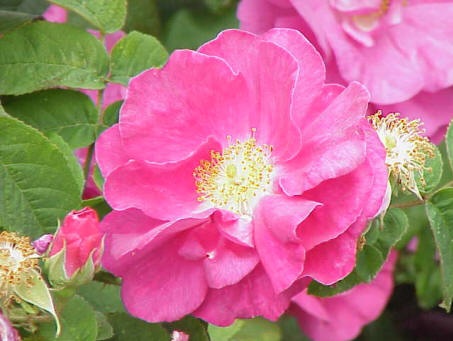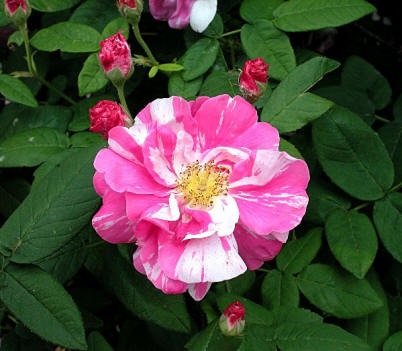

Why does the heroine come from such a strange background, and what is the significance of her name – Rosamund Halistan?
In an interview with Raymond H. Thompson in 1991 (see the whole interview here), Kathleen explained her primary interest as a writer and as a student of human nature:
"First of all, I have always been interested in border lands in time and in space, where one historical period, or one aspect of the human psyche, moves into another. The Arthurian period is fascinating because it has so many border lands: the confrontation between the Roman and the new barbarian cultures, and between the Germanic and Celtic peoples."
When agreeing with RT's observation that "The point of view in your novels is primarily that of your British characters", she said, "Yes. That is because I am English. I wanted to express the idea of the English being the aliens, the loathed strangers, the "other". The Germanic and the Celtic sides of the British tradition are warily finding out about each other. Loving one's own culture includes stepping outside it to see how it might look--how horrible it might look--to other people. Were I a Celt, I should write from the English point of view."
Therefore, when writing about the border lands of conflicting religious convictions, it seems inevitable that Kathleen would write from an "outsider" viewpoint, not her own. (There are plenty of clues in the story suggesting Kathleen's own beliefs.)
Rosamund has been brought up in a narrow, rather secretive, but essentially tolerant cult: her story is a journey into the world of other ideas. (My own experience every time I read it is of an intellectual and emotional opening out from the spiritual constriction of life at Park.)
Adam realises that though she is highly educated, she is narrowly educated and could be used by others ("There are many adepts who would take your brain and knowledge seriously – perhaps too seriously and for the wrong reasons.")
Another aspect of this narrowness is presented by Sir John when he says that the Halistans have no friends: that is, they have made no marriage ties in Furness. "You came here as strangers and after a hundred and fifty years you're still strangers." (p.104)
Characteristically, Margaret Fox puts it most bluntly (p.166) "But what art thou studying for? If reading doesn't lead to doing then it's just as idle as gossip or cards. … There are children to be taught….")

Rosa Gallica - The Apothecary's Rose
What does her name signify?
Halistan is not a common surname now but does appear in pre-census (1841) UK records. On page 368 Kathleen traces its path through time and space – and different languages. The name means "holy stone", a reference to the Philosopher's Stone, the alchemist's ultimate goal.
If the Halistans had come from Germany, their name in German would be "Heilig-stein". A search today found 86 people with the Heiligenstein surname on MyHeritage.com.
Turning the phrase "holy stone" into Latin gives us "Petra Sancta". Notice that in Latin the adjective follows the noun. Wikipedia has an entry for Silvester Petra Sancta who lived in Rome from1590 to1647.
In Italian, virtually a modern development from Latin, we find "della Santa Pietra".
A quick search discovers that "Daniel Pietra Santa está en Facebook"!
Rosamund is originally a Germanic name ("hros"+"mund") signifying "horse guardian". All of Kathleen's heroines are great horsewomen and Rosamund is no exception. Almost all her book covers feature a girl on horseback: as does Moon in Leo.
In later years the name became associated with the Latin phrase "Rosa Mundi" ("Rose of the World") and this is also relevant in the book. On p27 Lady Westby looks meaningly at the red and white roses that decorate the ceiling cornices at Park Hall. She thinks they are symbols of loyalty to the House of Tudor – Tudor roses. The Halistans nod kindly, but do not tell her that they are representations of the "Apothecary's Rose".
Rosa gallica officinalis, "the Apothecary's Rose", is one of the most ancient of roses. Believed to have come from ancient Persia, and to Europe in the 12th or 13th century via knights returning from the Crusades. The red -and -white striped variety called "versicolor" was named after Rosamund Clifford, mistress of Henry II, "Rosa Mundi".
It could be that, in turn, our Rosamund is named after the rose. She gets her alias by translating "Rose" into Greek: "Rhoda".

Rosa Mundi - Rose of the World

